From ancient South Indian temples to the finest Mughal ruins, Indian architecture is as old as civilization itself. The earliest traces of recognizable building activity in India can be traced back to the settlements of the Indus Valley. India is home to a myriad of temples, Baroque, and modernistic structures that tell the stories of their era. UNESCO lists 830 World Heritage Sites, 26 of which are on Indian soil.
India has seen a variety of architectural styles emerge over the course of its history. Some examples include temple architecture, Mughal architecture, Dravidian architecture, Sikh architecture, and cave architecture. Many early Indian buildings were made of wood, which was often decayed, burned, or brick that has been removed for reuse. Over millennia, it has progressed from small rock-cut cave shrines to huge temples that have extended across the Indian subcontinent and beyond, forming a style that is now seen in contemporary Hindu temples across the world.
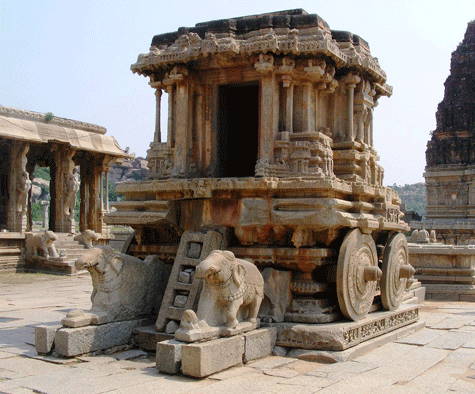
In the first century CE, buildings were constructed to house a holy symbol of a certain deity, which could then be adorned with sculptural figures of them to remember their mythological adventures and provide a place for worshippers to leave offerings and perform rituals. As a god’s home, the temple was considered a holy place where heaven and earth met, supplying them with a magnificent palace. Temple architecture has a long history in India. It has developed in all regions of the country. Despite the fact that the style’s roots are the same, there is a significant distinction and variation in architectural styles in temple architecture. This variation is primarily due to India’s geographical, climatic, racial, ethnic and historical diversity. There are three broad styles of Indian temple architecture: Nagara (northern style), Vesara (mixed style), and Dravida (southern style). Each of these types has its own distinct cultural influences and lineages. Hindu temple architecture represents a fusion of arts, dharmic ideas, convictions, traditions, and the Hindu way of life.
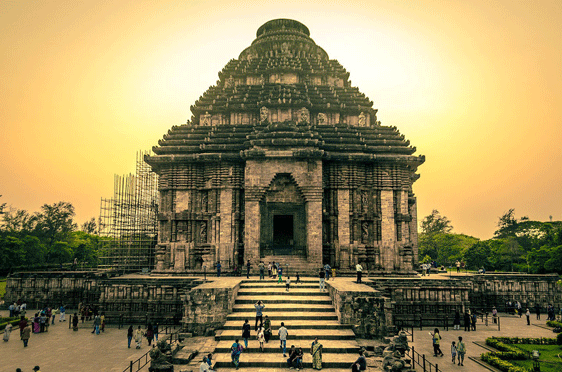
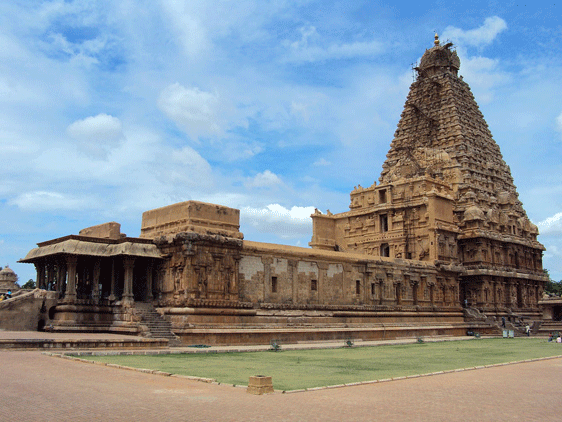
Mughal architecture is a distinct Indo-Islamic architectural style that evolved in Northern and central India from the 16th to the 18th century under the patronage of Mughal emperors. It’s a stunning symmetrical and decorative style of Persian, Turkish, and Indian architecture. Some of the most unforgettable Mughal architecture was created during Akbar the Great’s reign (1556-1605) and under the vision of Shah Jahan (1628-1658). Many palaces, mosques, gardens, and mausoleums were built by Akbar the Great. His architecture is notable for the use of sandstone on a grand scale, as well as vast enclosed courtyards and doomed shallow prayer halls. One of Akbar’s most stellar achievements was the construction of his father Humayun’s tomb in Delhi. Humayun’s Tomb, commissioned by Humayun’s wife in 1562 and designed by a Persian architect, was the first garden tomb on the Indian subcontinent and the first building to use red sandstone on such a large scale. It is the first building in India to use the Persian double dome with an outer layer supporting the white marble exterior, a previously unseen material. This decorated facade style was a significant contribution to Mughal architecture in the future.
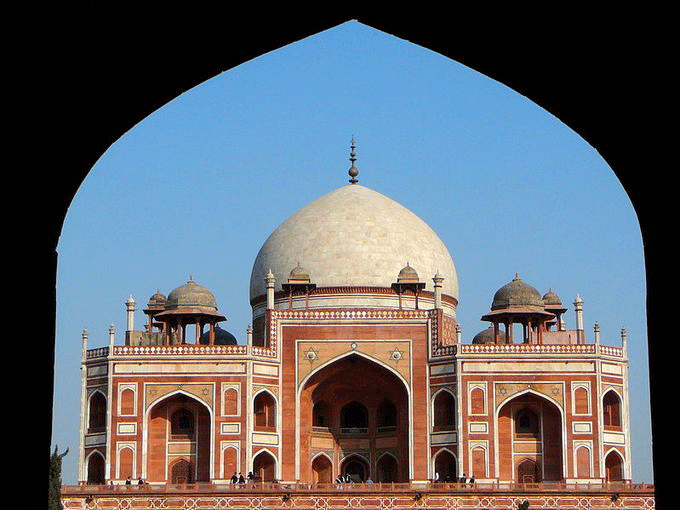
Shah Jahan’s vision brought a delicate beauty and detail to Mughal architecture. The Taj Mahal is without a doubt Shah Jahan’s most famous achievement. The Taj Mahal, located in Agra, is a white marble mausoleum constructed between 1632 and 1648 in memory of his third wife, Mumtaz Mahal. The palace, which reflects the Islamic garden of paradise and was built by 20,000 men, is generally considered as the greatest accomplishment in Mughal architecture. The pristine architectural masterpiece represents the best of Mughal artistic heritage in India and is widely recognized as a symbol of life, attracting about 7-8 million visitors per year.
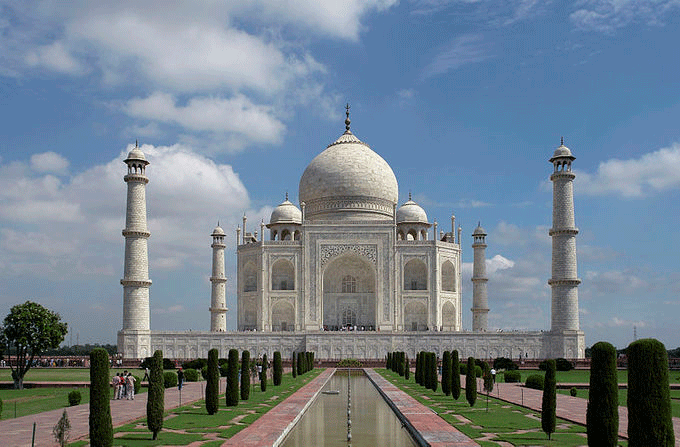
Dravidian architecture is a temple style that originated in South India in the ninth century. It was built by the Dravidian peoples and is mostly made up of pyramid-shaped temples called Kovils. Kovils rely on intricately carved stone to construct a step pattern that includes numerous sculptures of deities, warriors, kings and dancers. Many temples in Tamil Nadu are immersed in mythology and antiquity, dating back centuries to when numerous powerful dynasties dominated southern India and beyond. The Dravidian architectural style has its origins in the reign of the Pallava dynasty. The Pallava architecture’s crowning achievement is the rock-cut Group of Monuments at Mahabalipuram, a UNESCO World Heritage Site. This group includes excavated pillared halls with no exterior roof other than the natural rock and monolithic shrines where the natural rock is completely cut away and carved. The monuments are a combination of faith, religion, history, and mythology, formed by rocks or boulders, combining nature and sculpture.
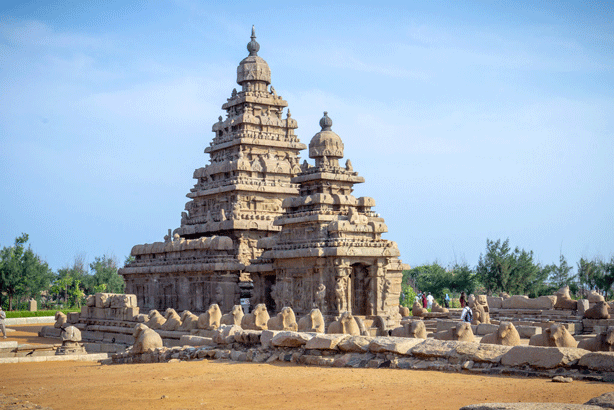
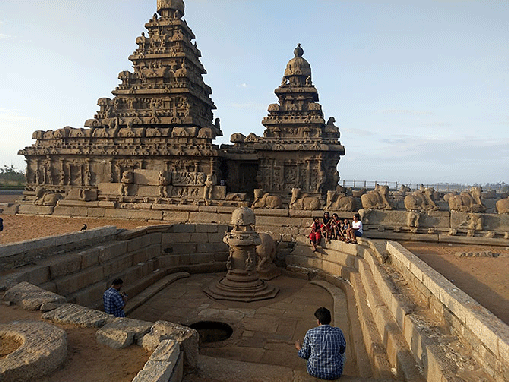
Sikh architecture is another popular architectural style in India. Sikh architecture is a world-renowned architectural style that is distinguished by qualities such as progressiveness, elegance, intricacy, austere simplicity, and flowing lines. It is increasingly expanding into new branches of new contemporary styles as a result of its modern progressive approach. While Sikh architecture was built within Sikhism 300 years ago, its beauty has led to its use in many non-religious buildings today. The gurdwara is a religious structure in Sikh architecture that houses the Guru of the Sikhs. Sikh temples are massive commemorative structures associated with the ten Sikh Gurus or with historical sites and events. Gurudwaras have entrances on all sides, indicating that they are accessible to all people without any distinction. This attribute represents the fundamental tenet of Sikh religion, which hails God as omnipresent.
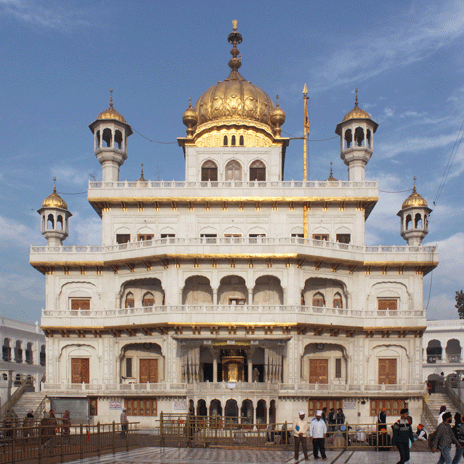

The cave architecture in India is suspected to have begun during ancient times, when Buddhist and Jain monks used the structures for worship and residence. Early examples of architectural craftsmanship on such structures include rock-cut patterns carved on overhanging rocks. Caves excavated from massive rocks gradually evolved due to their longevity in contrast to other structural materials such as wood. Some of the most important caves in India include Ellora Caves, Ajanta Caves, Badami Caves, Karla Caves, and Elephanta Caves. The Ellora Caves, a UNESCO World Heritage Site, are among the world’s largest rock-cut caves. The site contains over 100 caves that house monasteries and temples. It exhibits Buddhism, Hinduism, and Jainism art and architecture from 600 CE to 1000 CE. The caves were carved out of volcanic basalt cliff rock in the Charanandri hills with Cave 16 of Ellora being the world’s largest monolithic rock excavation in the form of a chariot called the Kailasha temple. In the eighth century, King Krishna I commissioned the temple, dedicating it to Lord Shiva. The cave has been around for over a century and houses deities and mythologies from Shaktism and Vaishnavism.
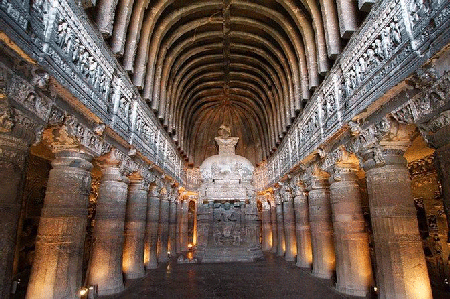
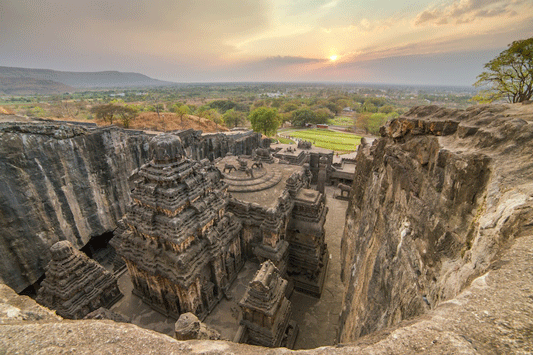
For millennia, Indian architecture has gained notoriety. It has been categorized into various styles and forms, each with its own individuality and speciality. Indian architecture is deeply rooted in the country’s heritage, culture, and religion. It contains elements that have flourished over centuries and continue to be influential in the modern era. Indian architecture encompassess areas that have been designated as UNESCO World Heritage Sites, emphasizing the significance of their protection.
